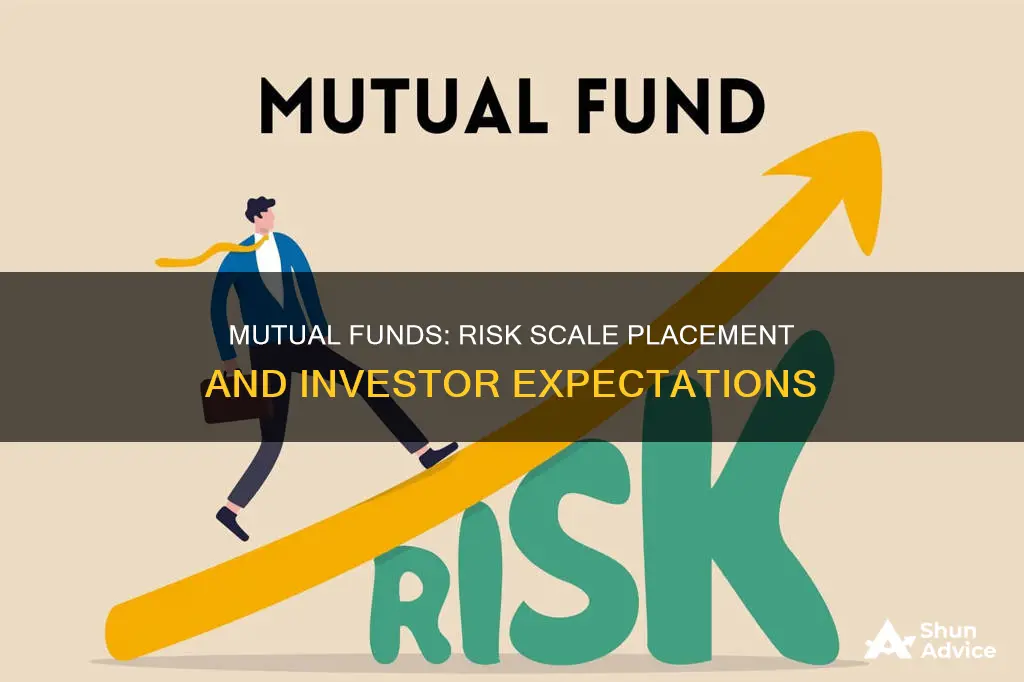
Mutual funds are a type of investment vehicle that pools money from multiple investors to purchase a diversified portfolio of stocks, bonds, or other securities. They are known for providing individual investors with access to diversified and professionally managed portfolios. While mutual funds are considered a more accessible way to invest, they still carry varying levels of risk that potential investors should be aware of. This is where the riskometer comes in—a standardised risk measurement scale introduced by the Securities and Exchange Board of India (SEBI) for Mutual Funds. According to SEBI regulations, all mutual fund scheme documents must display the riskometer clearly and upfront so that investors are aware of the potential risks associated with a particular fund. The riskometer classifies risk into five or six distinct levels, ranging from low to very high risk. These levels are determined by the underlying securities of the funds and help investors choose investments that align with their risk tolerance and financial goals.
What You'll Learn

Alpha, Beta, Standard Deviation, R-squared, and the Sharpe Ratio are statistical measures of risk
Mutual funds are a type of investment vehicle that pools money from multiple investors to purchase a diversified portfolio of stocks, bonds, or other securities. They are a way for individual investors to gain exposure to a professionally managed portfolio and potentially benefit from economies of scale, while also spreading risk across multiple investments.
There are varying levels of risk associated with mutual funds, depending on their investment strategies, holdings, and management competence. The Securities and Exchange Board of India (SEBI) has introduced a riskometer, a standardised risk measurement scale, which classifies risk into six distinct levels: Low, Low to Moderate, Moderate, Moderately High, High, and Very High.
When it comes to statistical measures of risk, there are five main indicators of investment risk that are commonly applied to the analysis of stocks, bonds, and mutual fund portfolios: Alpha, Beta, Standard Deviation, R-squared, and the Sharpe Ratio.
Alpha is a measure of an investment's performance on a risk-adjusted basis. It takes into account the volatility (price risk) of a security or fund portfolio and compares its risk-adjusted performance to a benchmark index. A positive alpha signifies that the investment is outperforming the market. The higher the alpha, the better the performance.
Beta, also known as the beta coefficient, is a measure of the volatility or systematic risk of a security or portfolio compared to the market as a whole. It is calculated using regression analysis and represents how an investment's return responds to market movements. A beta of 1.0 indicates that the investment's price will move in line with the market, while a beta greater than 1.0 indicates higher volatility, and a beta less than 1.0 indicates lower volatility.
Standard Deviation measures the dispersion of data from its mean. In finance, it is applied to the annual rate of return of an investment to measure its volatility or risk. A volatile stock would have a high standard deviation.
R-squared is a statistical measure that represents the percentage of a fund portfolio or security's movements that can be explained by movements in a benchmark index. It provides insight into the correlation between the fund and the benchmark.
The Sharpe Ratio, developed by Nobel laureate economist William Sharpe, measures risk-adjusted performance. It is calculated by subtracting the risk-free rate of return (typically the US Treasury Bond) from the rate of return for an investment and then dividing that result by the investment's standard deviation of its return. The Sharpe Ratio helps investors understand if an investment's returns are due to wise decisions or excess risk.
These statistical measures are valuable tools for investors to assess the risk and potential returns of mutual funds, helping them make informed decisions about their investment strategies and financial goals.
Municipal Bond Funds: When to Invest for Maximum Returns
You may want to see also

Risk levels range from low to very high
The risk levels of mutual funds range from low to very high. The Securities and Exchange Board of India (SEBI) has introduced a standardised risk measurement scale called the riskometer, which all mutual fund scheme documents must display clearly. The risk levels are: low, low to moderate, moderate, moderately high, high, and very high.
Low-risk funds have the least risk due to their underlying securities and are suitable for individuals seeking capital protection. Low to moderate-risk funds are ideal for investors who want to take a small risk to get some returns over a medium to long period. Moderate-risk funds are for those who want to expand their portfolio by taking some risks. Most dynamic bond funds fall under this category.
Moderately high-risk funds hold a higher level of risk and may be suitable for investors with a slightly higher risk profile. These funds are for those who are willing to accept some uncertainty and greater volatility in exchange for higher growth or profitability. High-risk funds mainly invest in equities and are ideal for those who are willing to take on high risk for potential gains.
Very high-risk funds are extremely risky and invest in volatile stocks or overseas mutual fund units. These funds are for investors who are likely to invest in high-risk, high-reward opportunities. They are willing to accept a significant risk to achieve the highest possible returns and are aware that the investment value may fluctuate widely, especially in the short term.
It is important to note that every mutual fund carries some degree of risk. Risk can come from various sources, such as changes in the economy, industry, political situation, currency, interest rates, inflation, management, fraud, or cost of raw materials.
Blackstone's Borrowed Funds: A Strategic Investment Move
You may want to see also

Risk appetite varies with age
Risk appetite is the degree of risk an individual or organisation is willing to accept while pursuing their objectives. It varies from person to person and entity to entity, and is influenced by factors such as financial stability, management efficiency, industry norms, and regulatory requirements.
When it comes to investing, an individual's risk appetite can change with age. Here are some ways in which risk appetite varies with age:
- Younger investors tend to have a higher risk appetite than older investors. This is because younger investors often have a longer time horizon for their investments to grow and can afford to take on more risk. They are also more likely to have a higher tolerance for volatility and potential losses. As a result, younger investors may be more willing to invest in riskier assets, such as stocks or growth-oriented mutual funds, expecting higher returns over the long term.
- On the other hand, older investors, especially those nearing retirement, tend to have a lower risk appetite. They may prioritise capital preservation and income generation over high returns. As such, older investors often favour more conservative investments, such as bonds, dividend-paying stocks, or low-risk mutual funds. This shift in risk appetite with age is driven by a shorter investment horizon and a greater need for stable income to fund retirement.
- Age also influences the types of mutual funds that may be suitable for an investor. Mutual funds are investment vehicles that pool money from multiple investors to purchase a diversified portfolio of assets. While younger investors may opt for equity-focused or growth-oriented mutual funds, older investors may prefer balanced or income-oriented funds that offer a mix of stocks, bonds, and other fixed-income securities to balance risk and return.
- Additionally, life events and milestones can impact an individual's risk appetite at different ages. For example, a young investor starting their first job may have a higher risk appetite, willing to invest a larger portion of their income in riskier assets. In contrast, an investor in their 40s or 50s with a family and financial dependents may have a lower risk appetite, opting for more conservative investments to protect their capital.
- It is important to note that age is not the only factor determining risk appetite. Other factors, such as income, financial goals, and investment experience, also play a significant role. Some older investors with a high-risk tolerance and a long-term investment horizon may continue to seek higher returns by investing in riskier assets. Similarly, younger investors with limited financial resources or a lower risk tolerance may prefer more conservative investments.
- Overall, while age can provide a general guideline for assessing risk appetite, it is essential to consider each investor's unique circumstances and financial profile when determining their appropriate level of risk.
Index Funds: When to Invest for Maximum Returns
You may want to see also

Risk is dependent on the type of fund
The risk associated with a mutual fund is dependent on the type of fund and its investment strategy. Mutual funds can be classified into four main categories: stock, money market, bond, and target-date funds. Each of these categories carries a different level of risk.
Stock Funds
Stock funds, also known as equity funds, invest primarily in the shares of companies listed on stock exchanges. The value of these funds is closely tied to the performance of the companies, which is influenced by various microeconomic factors such as government directives, economic cycles, and policies of central banks. These factors can cause fluctuations in stock prices, leading to potential gains or losses for investors.
Money Market Funds
Money market funds invest in short-term debt instruments, typically government treasury bills, and are considered low-risk investments. The returns on these funds are usually modest, slightly higher than regular savings accounts but lower than certificates of deposit (CDs). While money market funds are relatively safe, they are not insured by the Federal Deposit Insurance Corporation (FDIC).
Bond Funds
Bond funds focus on investments that offer a set rate of return, such as government and corporate bonds, and other debt instruments. These funds aim to generate interest income for investors. However, bond funds are subject to interest rate risk, meaning that changes in interest rates can cause fluctuations in the price of the bonds, leading to potential gains or losses.
Target-Date Funds
Target-date funds, also known as lifecycle funds, are commonly used for retirement savings. These funds automatically adjust their risk profile over time, becoming more conservative as the target retirement date approaches. This dynamic allocation strategy helps investors balance risk and return based on their long-term financial goals.
Other Types of Funds
In addition to the main categories, there are various specialised types of mutual funds, such as regional funds, sector funds, and socially responsible funds, each carrying its own unique set of risks.
Risk Mitigation Strategies
While mutual funds carry inherent risks, investors can employ strategies to mitigate these risks. Diversification is a key strategy, where investors spread their investments across different asset classes, sectors, and types of funds to reduce the impact of any single investment on their portfolio. Additionally, investors should carefully assess their risk tolerance, financial goals, and time horizon before selecting mutual funds.
Hedge Funds vs Investment Banks: Understanding the Key Differences
You may want to see also

Risk profiling tools help investors understand their risk tolerance
Risk profiling tools are essential for investors to understand their risk tolerance and make informed investment decisions. These tools help investors evaluate their willingness and capacity to take on financial risk, ensuring that their investments align with their risk appetite and financial goals.
An individual's risk profile is influenced by factors such as personal preferences, time horizon, and investing goals. Age, type of income, investment horizon, and financial goals also play a significant role. It is important to note that an investor's risk profile can change over time as life circumstances evolve, and it is recommended to periodically reassess and adjust investment strategies accordingly.
There are three main types of risk profiles: conservative, moderate, and aggressive. Conservative investors prioritise stability over high returns and prefer investments with lower risk, such as fixed deposits, government bonds, and other low-risk instruments. Moderate investors are willing to take calculated risks and have a balanced portfolio of equities and fixed-income instruments. Aggressive investors, on the other hand, are high-risk takers who seek good returns and are comfortable with volatile investments, often investing in equities, stocks, or high-risk mutual funds.
The Securities and Exchange Board of India (SEBI) has introduced a riskometer, a standardised risk measurement scale for mutual funds. It classifies risk into six levels: Low, Low to Moderate, Moderate, Moderately High, High, and Very High. This helps investors clearly understand the risk associated with a particular fund.
When it comes to mutual funds, they are considered to be on the lower end of the investment risk scale. Mutual funds are known for providing investors with access to diversified, professionally managed portfolios. By pooling money from multiple investors, mutual funds reduce individual risk by spreading it across multiple investments. However, it is important to note that mutual funds are not completely risk-free, and the level of risk depends on the specific fund's investment strategy, holdings, and management competence.
In summary, risk profiling tools are crucial for investors to understand their risk tolerance and make informed investment decisions. By evaluating their risk profile, investors can choose investments that align with their financial goals and risk appetite, ensuring a more comfortable and successful investment journey.
Betterment Investment Funds: Where is Your Money Located?
You may want to see also
Frequently asked questions
A mutual fund is an investment vehicle that pools money from multiple investors to purchase a diversified portfolio of stocks, bonds, or other securities.
Mutual funds carry several investment risks, including market, interest rate, and management risk. Market risk arises from the potential decline in the value of the securities within the fund. Interest rate risk affects funds holding bonds and other fixed-income securities, as rising interest rates can lead to a decrease in bond prices. Management risk is linked to the performance of the fund's management team.
There are five main indicators of investment risk that apply to the analysis of mutual fund portfolios: alpha, beta, standard deviation, r-squared, and the Sharpe ratio.
The risk levels in mutual funds can vary depending on the source and classification method. According to the Securities and Exchange Board of India (SEBI), there are five levels of risk: low, moderately low, moderate, moderately high, and high. However, another source classifies risk into six levels: low, low to moderate, moderate, moderately high, high, and very high.
It is important to assess your risk tolerance and investment objectives before choosing a mutual fund. Consider factors such as your investment horizon, risk appetite, and financial goals. You can use risk profiling tools and seek advice from financial professionals to help you make informed decisions about the level of risk that aligns with your investment strategy.







